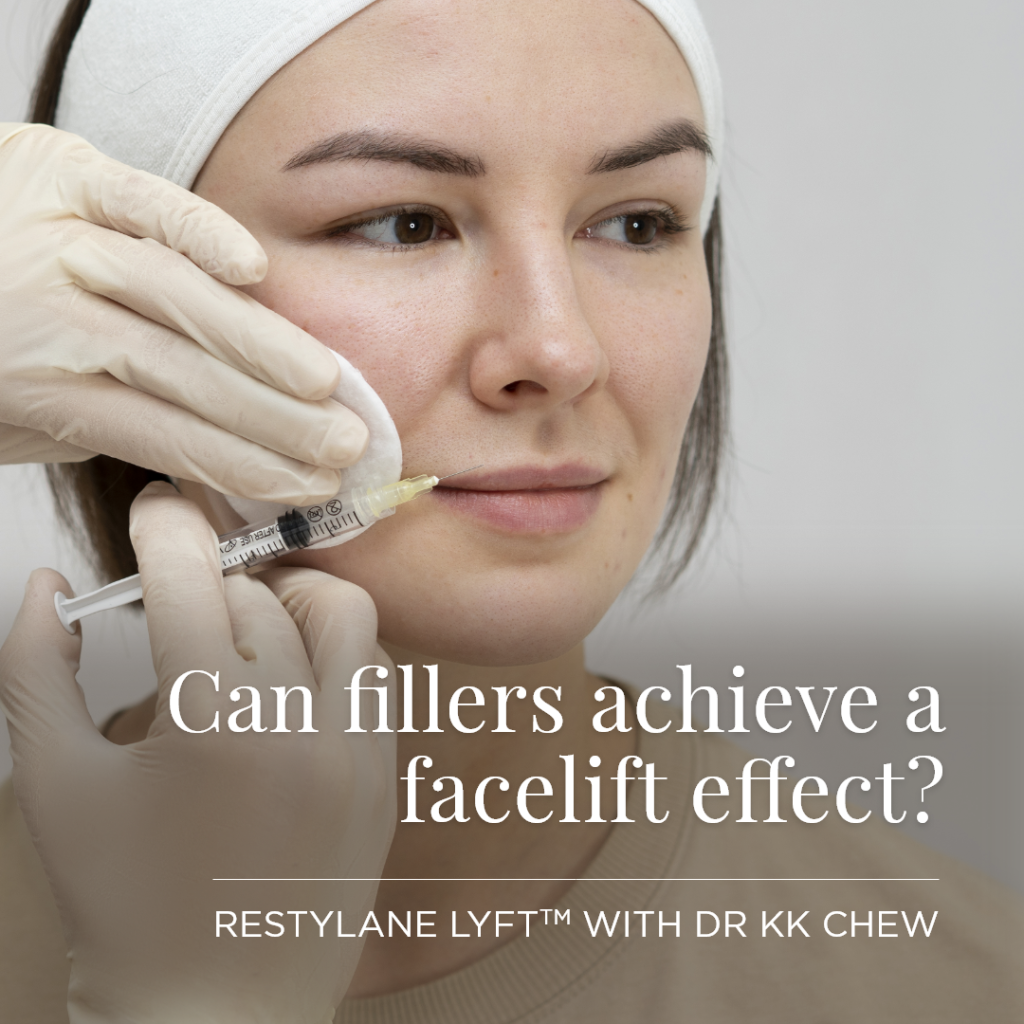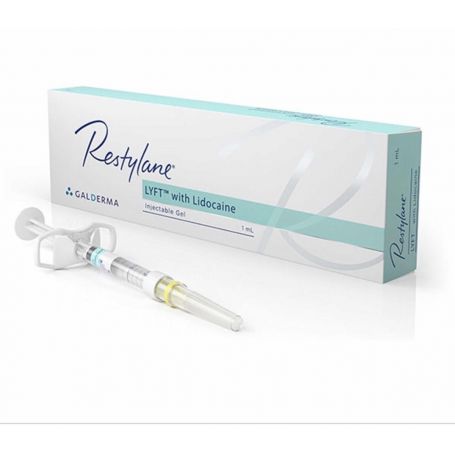Summary
Dr. KK Chew of NU.U Aesthetics & Wellness discusses the non-surgical trend of “Liquid Facelift” or “Fillers for facial lifting” using dermal fillers. Exploring the True Lift technique, he addresses facial aging involving lax ligaments, offering natural-looking facelifts. The article emphasizes the importance of a skilled doctor determining suitable filler use, dosage, and injection points for optimal results.
Dr. Chew introduces Restylane Lyft for True Lift, emphasizing its firm texture and high lifting capacity. Acknowledging individual uniqueness, he highlights combining treatments like HIFU for enhanced outcomes, concluding that skilled doctors can achieve facelift-like results with fillers.

What is “Liquid facelift” & how does it work?
The term “liquid facelift” has been used for some time to describe the results obtainable by dermal fillers and toxins in creating a facelift-like result.
During a liquid face-lift procedure, a patient receives multiple injections of dermal fillers, which are substances that restore facial fullness for a more youthful appearance.
“The end goal is to plump up the skin, and the beauty of this procedure is you can often get it done in one session. Nevertheless, to achieve true and natural lifting using liquid facelift often requires the experience of a doctor to determine the appropriate use of fillers (e.g. dosage amount, injection points), and the skills in delivering the fillers to the suitable injection points.” says Dr Chew.
Ageing of the face
As we age, the true retaining ligaments that support the face and skin become lax, contributing to visible signs of ageing. These include dropping of the lateral canthus of the eye, flattened apple cheeks, sagging of mid-face, deepening of the nasolabial folds as well as drooping of the mouth corner and jowls.
“Ageing of the face is actually a complex process involving not only loss of collagen and skin elasticity but also volumetric loss of the facial fat pads, deep fat and bone atrophy, repositioning of soft tissues as well as the ageing of facial (true) ligaments.
The 4 major true ligaments include the orbital ligament, the zygomatic ligament, the buccal maxillary retaining ligament and the mandibular ligament (see diagram below). These ligaments, the essential fibres that hold up the superficial muscular aponeurotic system layer of the face, play a part in holding up the soft tissues of the face.
In liquid facelift procedures, the appropriate use of suitable fillers at suitable injection points serves to provide good support to the true ligaments, ultimately achieve a face lifting effect in a natural way.” explains Dr Chew.
“As we age, the true retaining ligaments that support the face and skin become lax, contributing to visible signs of ageing. These include dropping of the lateral canthus of the eye, flattened apple cheeks, sagging of mid-face, deepening of the nasolabial folds as well as drooping of the mouth corner and jowls.” – Dr KK Chew
Achieve True Lift with Restylane Lyft
The art and science of achieving facial lifting with fillers

References
Elsa Raskin, MD, Gregory S. LaTrenta, MD, Why Do We Age in Our Cheeks?, Aesthetic Surgery Journal, Volume 27, Issue 1, January 2007, Pages 19-28, https://doi.org/10.1016/j.asj.2006.12.003
Your journey to looking and feeling good starts here. Learn more about how this treatment can help you unlock the restoration and rejuvenation you need for your face and skin. Contact us to make an appointment.

